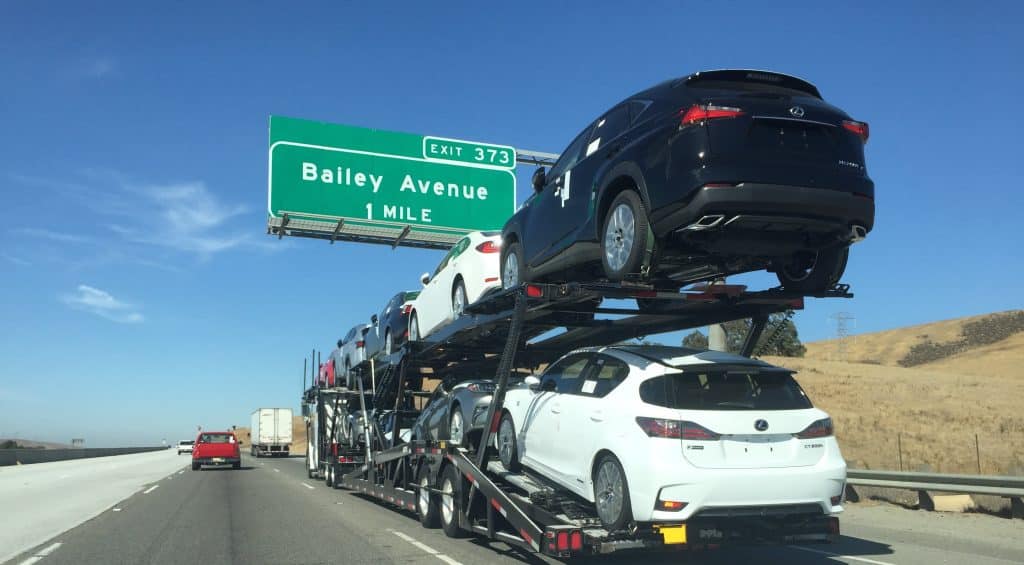Understanding The Unique Challenges Of Shipping To Hawaii
Understanding the unique challenges of shipping your electric car to Hawaii is essential for ensuring a smooth and stress-free experience. Unlike shipping to the mainland, transporting a vehicle to the islands involves navigating logistical hurdles that can complicate the process. One significant challenge is the limited number of shipping options available, as not all carriers service Hawaii. This means you may have fewer choices regarding timelines and costs, necessitating careful planning and research.
Moreover, Hawaii’s geographical isolation presents additional concerns. For electric cars, particularly, it’s crucial to consider battery regulations and charging infrastructure in transit. The journey often involves ferrying vehicles across open waters, which can lead to delays due to weather conditions or scheduling conflicts with ferry services. Understanding these potential delays helps you set realistic expectations for arrival times.
Additionally, there are specific environmental regulations that govern vehicle emissions in Hawaii. Electric vehicles (EVs) typically align well with these regulations; however, ensuring compliance with local laws is vital during the shipping process. You’ll want to verify that your chosen carrier adheres to all necessary guidelines.
Another key factor is preparation for arrival at your destination. Once your electric car reaches Hawaii, it will require proper registration and adherence to state-specific rules regarding EVs. Familiarizing yourself with these requirements ahead of time can save you from unexpected hurdles once your car arrives.
Overall, while shipping an electric vehicle to Hawaii presents unique challenges, understanding these factors allows you to navigate them effectively and enjoy peace of mind throughout the process. With thorough preparation and knowledge of local regulations, you can ensure that your transition to island life is as smooth as possible.
Choosing The Right Shipping Method For Your Electric Car
When it comes to shipping your electric car to Hawaii, selecting the right shipping method is crucial for ensuring a smooth and stress-free experience. The two primary options available are container shipping and roll-on/roll-off (RoRo) transport. Each method has its unique advantages and considerations, making it essential to assess which aligns best with your needs.
Container shipping offers a higher level of protection for your electric vehicle. By placing your car in a secure container, you shield it from potential damage due to weather conditions or other vehicles during transit. This method is particularly beneficial if you have added features or aftermarket modifications that require extra care. Additionally, container shipping allows for the transport of personal belongings alongside your car, providing extra convenience.
On the other hand, roll-on/roll-off (RoRo) transport can be a more economical option. In this method, vehicles are driven directly onto the cargo ship and secured in place without additional protective packaging. While RoRo tends to be less expensive than container shipping, it does expose your vehicle to environmental factors during transit. If you choose this option, ensure that you select a reputable company with strong safety protocols in place.
Ultimately, the choice between these methods depends on factors such as budget, timeline, and how much protection you want for your vehicle during its journey across the ocean. Whichever option you choose, ensure that all necessary preparations—like disconnecting the battery and securing loose parts—are completed ahead of time to facilitate an efficient process. By carefully weighing these considerations, you’ll set yourself up for a seamless relocation of your electric car to Hawaii’s beautiful shores.
Preparing Your Electric Car For Transport: Essential Steps
Preparing your electric car for transport to Hawaii involves a series of essential steps to ensure a smooth and stress-free experience. First, it’s crucial to familiarize yourself with the specific requirements of shipping electric vehicles (EVs). Start by reviewing your chosen shipping company’s guidelines, as they may have particular protocols for handling EV batteries.
Before the transport process begins, conduct a thorough inspection of your car. Check for any existing damage and document it with photographs. This will help in case you need to file a claim later. Additionally, make sure your vehicle is clean, both inside and out; this not only assists with inspections but also helps you identify any potential issues that may arise during transit.
Next, prepare your electric car’s battery. It’s advisable to charge the battery to around 50% before shipping—this level is optimal for maintaining battery health during transport. If possible, disable any alarm systems or features that could activate unintentionally during transit. You should also remove personal items from inside the vehicle since most shipping companies do not allow personal belongings in the car.
Finally, ensure that your vehicle is registered and insured appropriately for its journey across the ocean. Check local regulations in Hawaii regarding registration upon arrival; understanding these requirements ahead of time can save you headaches later on.
By taking these proactive measures—conducting inspections, managing battery levels, securing insurance, and staying informed—you’ll set the stage for a seamless transition as you ship your electric car to Hawaii. With careful preparation, you can focus on enjoying your new island life without unnecessary stress over logistics.
Navigating Customs And Regulations For A Smooth Shipment
Navigating customs and regulations is a crucial aspect of shipping your electric car to Hawaii, ensuring a seamless transition from the mainland to the islands. Understanding the specific requirements can alleviate stress and prevent unexpected delays during the shipment process.
When shipping an electric vehicle (EV), it’s essential to familiarize yourself with both federal and state regulations. Hawaii has unique import rules that differ from those on the mainland, particularly concerning emissions standards. Make sure your EV complies with Hawaii’s environmental regulations, as vehicles not meeting these standards may face additional scrutiny or even denial of entry.
Documentation is another critical element. You’ll need to prepare several key documents, including proof of ownership, registration details, and any financing agreements if applicable. Additionally, a bill of lading from your chosen shipping company will be necessary for customs clearance upon arrival in Hawaii.
It’s also wise to check for any outstanding fees associated with importing vehicles into the state. These may include taxes or duties that could apply based on the vehicle’s value and specifications. Engaging with a knowledgeable shipping company experienced in transporting EVs can be invaluable; they can guide you through all necessary paperwork and ensure compliance with local laws.
Lastly, consider reaching out to Hawaii’s Department of Transportation or local customs officials if you have specific questions about your vehicle model or shipment process. Staying informed about these regulations not only streamlines your shipment but also ensures that once your electric car arrives in paradise, it’s ready for immediate use without unnecessary complications. With proper preparation and understanding of customs processes, you can focus more on enjoying your new island lifestyle rather than stressing over logistics.
Finding Reliable Shipping Companies Specializing In Electric Vehicles
When considering the transport of your electric vehicle (EV) to Hawaii, finding a reliable shipping company that specializes in EVs is crucial for a stress-free experience. Given the unique requirements associated with electric vehicles—such as battery handling, weight considerations, and regulations—it’s essential to choose a company with expertise in this area.
Start by researching companies that have a proven track record in shipping electric cars. Look for those that provide clear information about their services online and have positive customer reviews specifically related to EV shipping. A specialized company will understand the nuances of transporting an electric vehicle, including adhering to safety protocols for lithium-ion batteries during transit.
Next, consider reaching out to potential shippers directly. A reputable company should be open to discussing their processes and addressing any concerns you may have about transporting your EV. Inquire about their experience with electric vehicles and ask how they handle potential issues like battery discharge during transport or compliance with local regulations.
Additionally, ensure that the company offers adequate insurance coverage tailored to protect your vehicle throughout its journey. This not only provides peace of mind but also signifies professionalism in handling high-value assets like electric cars.
Lastly, pay attention to customer service; an engaged and knowledgeable team can make all the difference when it comes to navigating logistics or unexpected challenges. By investing time into selecting a reliable shipping partner specializing in electric vehicles, you can facilitate a smooth transition for your car from mainland USA to Hawaii, ensuring it arrives safely and ready for your adventures on the islands.
What To Expect During The Shipping Process: A Timeline
When you decide to ship your electric car to Hawaii, understanding the timeline of the shipping process can alleviate much of the stress associated with it. The journey begins once you’ve selected a reputable shipping company that specializes in transporting vehicles to Hawaii. After booking your shipment, expect an initial confirmation within a few days detailing the schedule and any required paperwork.
Typically, the next phase involves preparing your vehicle for transport. This includes securing personal items and ensuring that your electric car is in good working condition. Depending on the company’s requirements, this preparation might take a day or two. It’s crucial to check battery levels and charging systems, as some carriers may require specific battery management protocols.
Once prepared, you’ll hand over your vehicle for loading onto a transport vessel. This step usually occurs within one week of your initial booking. The actual shipping time varies based on weather conditions and logistical factors but generally takes about 7-14 days from port to port.
Upon arrival in Hawaii, expect additional processing time for customs clearance before you can pick up your electric car. This stage typically lasts 1-3 days but can vary depending on individual circumstances and documentation completeness.
In total, from booking to receiving your vehicle in Hawaii, anticipate approximately two to four weeks for the entire process. By staying organized and maintaining clear communication with your chosen shipping provider throughout this timeline, you’ll ensure that receiving your electric car is as seamless and stress-free as possible. Embrace this journey into island life with confidence!
Tips For Picking Up Your Electric Car In Hawaii: Final Considerations
When it comes to picking up your electric car in Hawaii, a few final considerations can ensure a smooth and stress-free experience. First, familiarize yourself with the location of the vehicle pickup site. Whether you’re collecting your car from a port or an agency, knowing how to get there ahead of time can save you from any last-minute confusion. Check local traffic patterns and plan for potential delays due to island-specific conditions.
Next, verify that all necessary documentation is in order before arriving. This includes your shipping paperwork, identification, and any forms required by the rental or shipping company. Having everything organized will streamline the pickup process and help avoid unnecessary complications.
Once you arrive at the pickup location, take some time to inspect your electric vehicle thoroughly. Look for any signs of damage that might have occurred during transit and document these with photographs if necessary. Ensure that all components are functioning correctly—check battery levels, charging ports, and tire conditions—to confirm that everything is in working order before hitting the road.
Lastly, remember that driving an electric car in Hawaii may differ from what you’re used to on the mainland. Familiarize yourself with local charging stations and understand how they operate. Hawaii has made significant strides in expanding its EV infrastructure, so knowing where to charge will enhance your overall experience.
By taking these factors into account when picking up your electric car in Hawaii, you’ll be better prepared to enjoy all that this beautiful destination has to offer without any added stress related to transportation logistics. Embrace the journey ahead!









